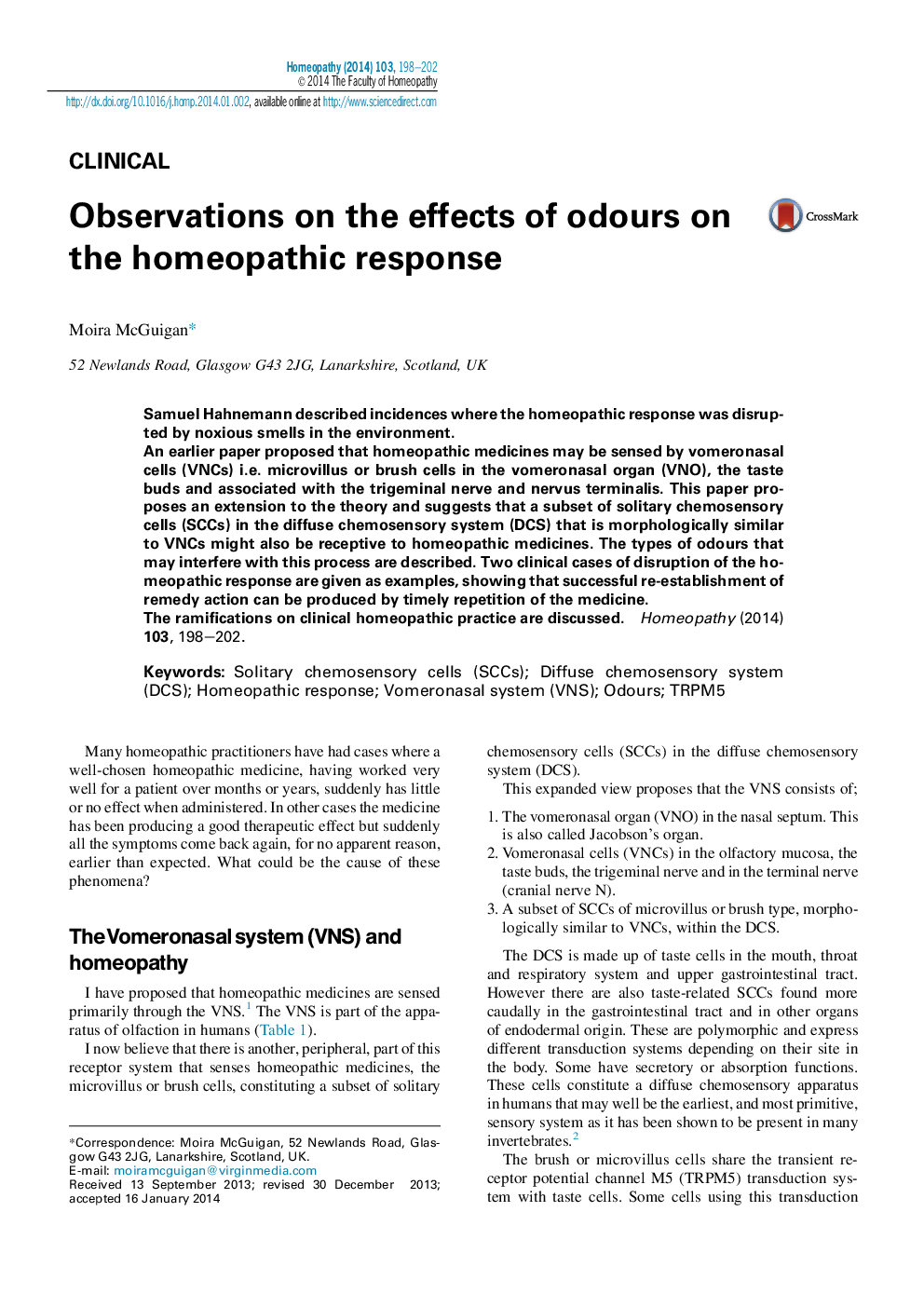| Article ID | Journal | Published Year | Pages | File Type |
|---|---|---|---|---|
| 2629956 | Homeopathy | 2014 | 5 Pages |
Samuel Hahnemann described incidences where the homeopathic response was disrupted by noxious smells in the environment.An earlier paper proposed that homeopathic medicines may be sensed by vomeronasal cells (VNCs) i.e. microvillus or brush cells in the vomeronasal organ (VNO), the taste buds and associated with the trigeminal nerve and nervus terminalis. This paper proposes an extension to the theory and suggests that a subset of solitary chemosensory cells (SCCs) in the diffuse chemosensory system (DCS) that is morphologically similar to VNCs might also be receptive to homeopathic medicines. The types of odours that may interfere with this process are described. Two clinical cases of disruption of the homeopathic response are given as examples, showing that successful re-establishment of remedy action can be produced by timely repetition of the medicine.The ramifications on clinical homeopathic practice are discussed.
